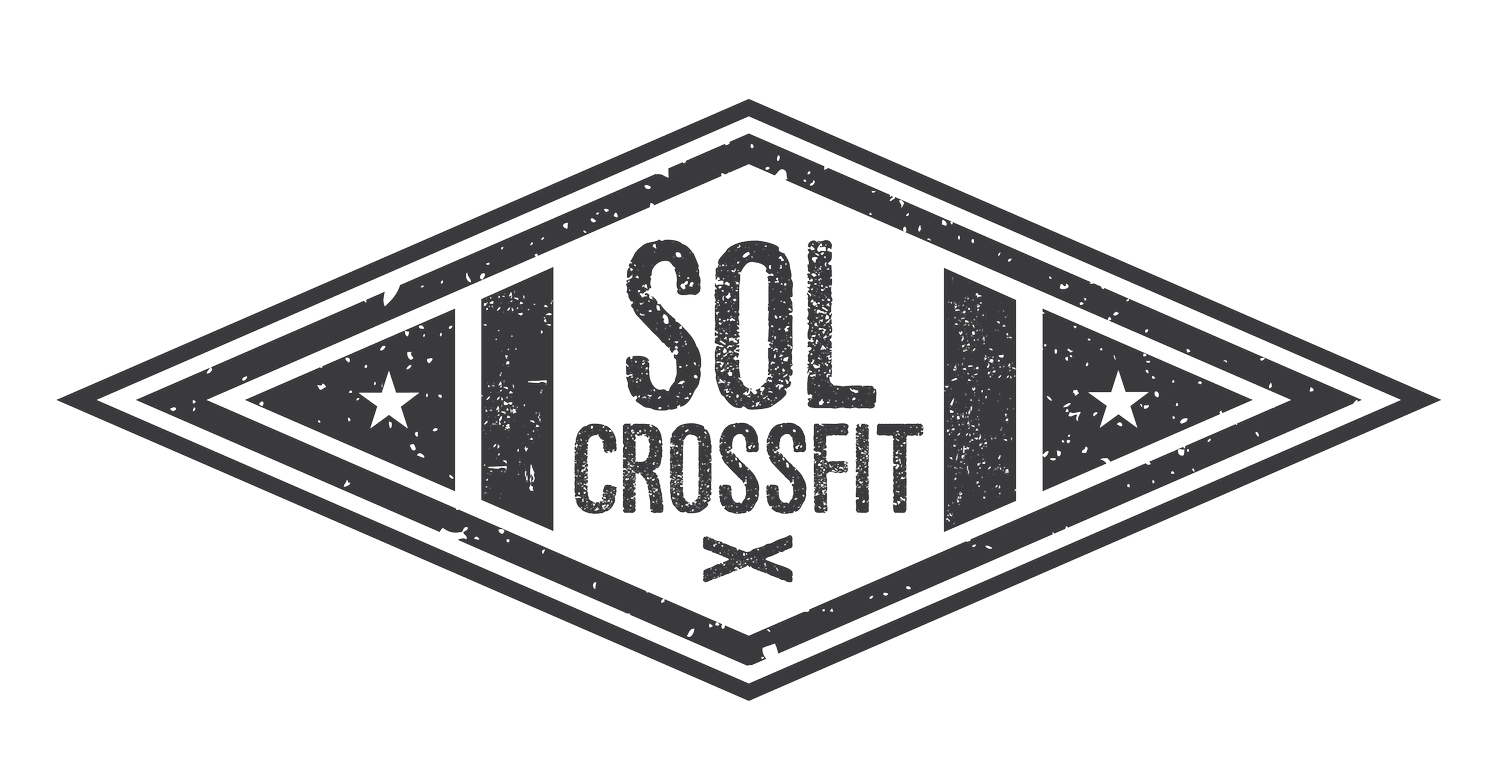Fueling for Function: Smart Nutrition Strategies That Boost Your Performance
At Sol CrossFit, we believe that strength is built in the gym—but performance is fueled in the kitchen. Whether you're crushing MetCons, building muscle through strength cycles, or mastering gymnastic progressions, what you put on your plate directly affects how you perform, recover, and feel. It’s not just about eating clean; it’s about fueling smart. Every meal is an opportunity to support your training and enhance your results.
Here are some practical, sustainable nutrition strategies to help you get the most out of your training:
1. Prioritize Protein for Strength and Recovery
Protein is essential for muscle repair and growth. Without it, your body struggles to rebuild after intense sessions. Aim for a source of lean protein at every meal. Think eggs, chicken, tofu, Greek yogurt, or a protein shake post-WOD.
A good rule of thumb: consume 0.7 to 1 gram of protein per pound of bodyweight daily, adjusting based on your goals and activity level. After training, prioritize fast-absorbing proteins like whey to quickly begin the recovery process. Consistency here can drastically reduce muscle soreness and help you build lean mass over time.
2. Fuel Around Your Workouts
What you eat before and after your workout matters. A small meal or snack with protein and carbs 60-90 minutes before training helps fuel your session and prevent fatigue. A banana with almond butter, rice cakes with turkey, or oatmeal with berries and a scoop of protein powder are great options.
After training, don’t wait too long to eat. Your muscles are primed for recovery. Aim to consume a combination of protein and carbohydrates within 30-60 minutes of your workout. This helps replenish glycogen stores and initiates muscle repair.
3. Don’t Fear Carbs—Use Them Wisely
Carbs are your body’s preferred energy source during high-intensity workouts. While low-carb diets have their place, they’re not ideal when you’re lifting heavy, sprinting, or doing long WODs. Instead of cutting carbs, focus on choosing quality ones: sweet potatoes, oats, quinoa, rice, fruit, and vegetables.
Timing matters too. Have carbs before and after your workouts to maximize performance and recovery. On rest days, shift toward fibrous vegetables and moderate portions of whole grains to support overall energy and nutrient intake.
4. Hydrate Like It’s Your Job
Dehydration leads to fatigue, cramping, headaches, and poor recovery. And here in Texas, sweating buckets during summer WODs is part of the deal. Aim to drink at least half your bodyweight in ounces of water per day. For a 180-pound person, that’s 90 ounces daily—more if you're training hard or spending time outside.
Add electrolytes (like sodium, potassium, and magnesium) especially during longer sessions or if you notice signs of fatigue. A pinch of sea salt and a splash of lemon in your water can make a noticeable difference.
5. Focus on Consistency, Not Perfection
You don’t need a "perfect diet" to see results. You need a consistent one. Instead of chasing short-term fixes or restrictive plans, build habits you can maintain long-term. Follow the 80/20 rule: eat nutrient-dense, whole foods 80% of the time and leave space for flexibility 20% of the time.
This balance keeps you from burning out, allows room for social meals, and helps maintain a healthy relationship with food. Remember, food is fuel, but it’s also joy, connection, and culture.
Bonus Tip: Ask for Help When You Need It
Nutrition can feel overwhelming, especially when you’re balancing work, family, and training. But you don’t have to figure it all out alone. Our team at Sol CrossFit is here to help guide your performance, inside and outside the gym. Whether you need help creating a meal plan, navigating macros, or adjusting your approach based on your goals, we’re here to support you every step of the way.

